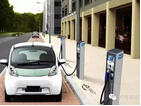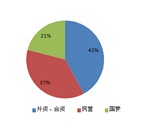With the announcement of the ban on the sale of fuel vehicles in various countries around the world, and the comprehensive efforts of major auto companies in the field of new energy vehicles, new energy vehicles ushered in a major outbreak in 2018.
From the perspective of the new energy vehicle data released by the China Automobile Association in September, the production and sales of new energy vehicles increased steadily in September, with a total sales of 121,000 units, an increase of 19.8% from the previous month and a year-on-year increase of 54.8%. Compared with the year-on-year decline in China’s car sales in September, new energy vehicles can be described as “counter-current”.
While new energy vehicles continue to increase market share, they also bring about changes and advances in automotive technology. The arrival of new technologies will inevitably lead to the regression or even disappearance of some traditional technologies. Then, is the rapid development of new energy vehicles also indicating that the era of the end of fuel vehicles is coming? This article will find out through the transmission of one of the three major parts of the car.
The transmission is not so important to pure electric vehicles
The transmission is one of the core components of the traditional fuel vehicle. It has two basic functions. One is to cooperate with the clutch to ensure the normal start of the car, and it will not be extinguished due to the excessive starting load. Second, in the process of changing the speed of the owner, The engine is stabilized at the operating speed by the switching of the gear position (speed ratio). It has a crucial impact on the driving experience of the car, but in the field of new energy vehicles, the transmission does not seem to be that important. Because the electric motor's motor can already rely on its own perfect system to make the vehicle run normally, and the transmission has limited effect on improving the drivability, adding another transmission will increase the vehicle's weight and increase the cost.

At present, most of the domestic pure electric vehicles do not have a physical transmission. Many people may see the gears of some cars and the gear display on the instrument, but in fact, those are the analog gears that cater to consumers. The motor itself can work stably at various speeds without the aid of a gear shifting mechanism.
In addition, pure electric vehicles can not be equipped with ordinary transmissions. The main reason is that the size and weight of ordinary transmissions are too large compared to electric vehicles. Originally, the battery pack took up the entire chassis space, and there was no excessive space at the root. Secondly, the transmission efficiency is not high enough! Taking the dual-clutch transmission with high transmission efficiency as an example, the actual transmission efficiency is about 87%, which means that the original battery pack has a cruising range of 100 kilometers, and only 87 kilometers are left after passing to the wheel. At the same time, considering the weight factor of the transmission, it may also reduce the actual cruising range!
The function of the motor is much simpler and more powerful than that of the fuel machine. The electric car can run normally without a transmission. So why add a cost plus a transmission?
Transmission trend
Many industry insiders who recognize that the secondary transmission will be the future trend also believe that the use of a two-speed transmission can make the motor work more in the high-efficiency zone. The reason is that when the two-speed transmission is used, the working torque of the motor is higher than that of the fixed gear. The reducer is much smaller, which reduces the operating current of the motor, reduces the burn-in loss of the motor, and improves the working efficiency of the motor.
There are also people in the industry who believe that for pure electric vehicles, in order to improve the traditional ratio and achieve maximum speed and maximum grade, the transmission can be improved, and the five-speed transmission can improve the performance of the vehicle. At this stage, the five-speed transmission has achieved industrial development, and the development of the two-speed transmission is obviously not obvious. Therefore, the five-speed transmission can directly apply the existing technology and results, and achieve the reduction of research and development costs, while the five-speed transmission is on the battery. The requirements of the motor are not high, and it may be the main direction of the development of electric vehicles in the future.
















 RCCN WeChat QrCode
RCCN WeChat QrCode Mobile WebSite
Mobile WebSite







